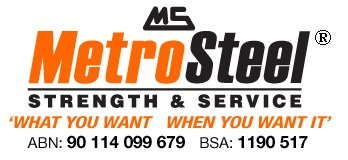While the term ‘austenitic steel’ sounds like a bit of a mouthful, it’s actually the most common type of steel in use today. Austenitic steels are metals that contain both high levels of chromium and nickel, and low levels of carbon. As such they’re non-magnetic and have a high levels of resistance to corrosion. This means that they’re used in a wide variety of industries. Let’s take a closer look at where these steels are used.
The automotive industry
Austenitic steel has long been the material of choice for car manufacturers worldwide. It allows manufacturers to have the desired levels of strength and safety at a relatively low price and accounts for as much as 12% of the entire world’s austenitic steel production. As a rough rule of thumb, steel makes up around 60% of the entire weight of a vehicle, so it’s used on a wide variety of parts including engines, pistons con-rods, crank shaft’s and automotive trim.
Cookware/tables
One of the best known austenitic steels is more commonly known as 304 grade and it’s this grade of steel that is often used in the manufacture of cookware and tables. Because of its easy to clean non-corrosive properties, it’s ideal for everything from chef’s preparation tables through to oven housing, pots and pans, and even utensils. There are some theories that austenitic steel pans containing nickel can leach into food that is being prepared within, but this has not been proven.
Industrial use
Special grade austenitic steels are also used in heavy industry. They’re ideal in the petrochemical industry for example because of their excellent anti-corrosive properties particularly when exposed to a range of corrosive liquids/substances. In addition they’re successfully used in the production of equipment such as heat exchangers, chemical reactor vessels, and chemical storage tanks.
Architecture
Love it or hate it, stainless steel architecture when done well can look stunning. A prime example is the art deco Chrysler Building in New York. The entire crown of the building is clad with austenitic steel and despite the fact that it was constructed a little under 90 years ago, it’s still one of the most striking buildings to dominate the New York skyline. Not only is it striking to look at, architectural steel is is also incredibly practical. Did you know for instance that steel has the highest strength to weight ratio of any building material? It can also be made on a consistent level meaning there’s no variation from one steel to another, so you’ll always have square corners and straight walls.
While austenitic steels are more costly than ferritic (metallic) steel, they are more durable, more corrosion resistant and generally have a high tensile strength and that’s why they’re so widely used in all types of manufacture, construction and industry.
If you’d like to know more about what type of stainless steel is best for your project, then contact the experts at Metro Steel. We’ve been fabricating steel for over 20 years, so what we don’t know about steel and steel types probably isn’t worth knowing. Of course if we can help with material fabrication in any way, then we’re happy to do that too. To find out more contact us on 07 3204 1000.
 Talk to an Expert (07) 3204 1000
Talk to an Expert (07) 3204 1000 Working Hours - Mon – Fri 7:00 AM – 4:00 PM
Working Hours - Mon – Fri 7:00 AM – 4:00 PM